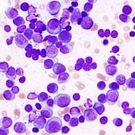Addition Of Defibrotide To Melphalan-Prednisone-Thalidomide Combination Produces Fewer Side Effects In Multiple Myeloma Patients

A recent study suggests that the addition of defibrotide to the combination regimen of melphalan (Alkeran), prednisone, and thalidomide (Thalomid) may result in fewer side effects in multiple myeloma patients. The Phase 1 clinical trial results were recently published in the journal Haematologica.
With the development of multiple myeloma therapies, the traditional melphalan-prednisone (MP) treatment regimen has been combined with substances such as Velcade (bortezomib) and thalidomide for more effective results. In particular, clinical trials have shown that these new combination treatments produce greater responses in patients than the traditional MP treatment regimen.
However, the presence of side effects, in particular clotting in the veins, also known as deep-vein thrombosis, and nerve damage in the limbs, also known as peripheral neuropathy, leaves room for improvement in these treatment options.
Defibrotide, an anti-clotting compound, has been shown to sensitize myeloma cells to chemotherapy in in vitro studies when combined with cancer-fighting drugs. In vitro studies are studies performed in controlled environments like test tubes or Petri dishes.
In this Phase 1 trial, researchers attempted to determine the dosage limit of defibrotide in combination with melphalan, prednisone and thalidomide while also evaluating the regimen’s effectiveness and toxicity.
The researchers recruited 24 patients with relapsed or refractory myeloma for their study. As initial treatment, patients received six 35-day cycles of melphalan (0.25 mg/kg on days 1 to 4), prednisone (1.5 mg/kg on days 1 to 4), thalidomide (50 to 100 mg on days 1 to 35), and any of three doses of defibrotide given either orally or intravenously (IV). Patients were then given 1.2 g/day of defibrotide orally and 50 mg/day of thalidomide as maintenance therapy until disease progression or excessive toxicity.
Forty-three percent of patients achieved partial response and nine percent experienced very good partial response or complete response, adding up to an overall response rate of 52 percent. The median progression free survival was 10 months, and at one year, 34 percent of patients remained progression-free. The overall survival rate after one year was 90 percent.
The most common side effects observed in patients included reduced white blood cell count (61 percent), reduced platelet count (39 percent), and fatigue (8 percent). Numerous participants required blood transfusions and the added support of granulocyte-colony stimulating factor (G-CSF), which stimulates stem cell production. One patient (4 percent) experienced clotting in the veins.
The researchers noted that there were no severe cases of peripheral neuropathy, a side effect that, like deep vein thrombosis, is commonly observed with thalidomide.
They did not observe any dose-limiting side effects. The highest dose of defibrotide administered during the trial (7.2 g/day orally on days 1 to 4 followed by 4.8 mg/day on days 5 to 35) was therefore defined as the maximum tolerated dose.
The study authors expressed enthusiasm about the significantly low rate of deep vein thrombosis and peripheral neuropathy attributable to defibrotide. They recommend further investigation of the drug, particularly in combination with thalidomide, Revlimid (lenalidomide), and pomalidomide.
For more information, please see the journal Haematologica (abstract).
Related Articles:
- None Found

